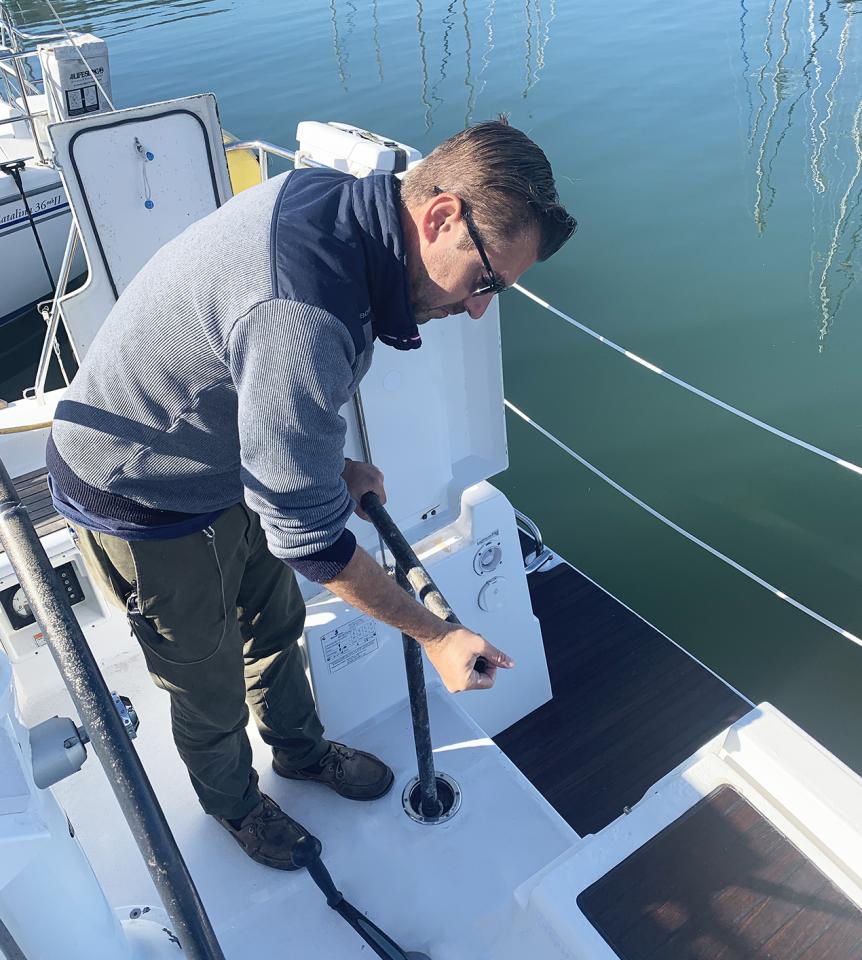
Sailboats consist of hundreds of parts, large and small, which are constantly subjected to the stresses of sun, salt water, and wear and tear. As even new and diligently maintained boats can experience a problem, every prudent sailor must know how to respond - and it begins with preparation before you even leave the dock.
Before leaving the dock, locate and check:
- Emergency Tiller - In the event of a steering failure, you may need to react quickly to keep your crew and boat out of harm's way. Know where to find the emergency tiller and practice installing it. If you're unsure of how to install the emergency tiller, contact the office to request a Fleet Technician's assistance.
- Anchor - If the boat's steering or propulsion is disabled, you may need to drop anchor quickly to avoid drifting into hazards.
- Check the anchor rode to ensure that it will be free to run.
- Also verify that the bitter end of the rode is securely attached to the boat.
- VHF Radio - Ensure that it is turned on.
- The Modern Sailing office monitors Channel 71 during business hours. If you are in Sausalito: the main Richardson Bay channel within the vicinity of the Spinnaker Restaurant, you'll be within range to communicate with the office. Berkeley: just outside the breakwall, reception is weakened. You can call the office directly: (415) 331-8250.
- After receiving your clearance to depart from the office on Channel 71, switch your VHF radio to Channel 16.
- The Boat's White Binder - USCG and insurance documentation, SeaTow membership card, and instructions for calling for help are inside the white binder.
- Flashlight - verify that it powers on. If not, contact the office to request batteries or a replacement.
- Emergency Flares
- Fire Extinguishers
- Air Horn
- Bungs (Wooden Plugs) and Rubber Mallet
- First Aid Kit
- Spare Line or Lines
- Type IV Throwable PFDs
- Always Brief Your Crew - Instruct your crew on how to start and stop the engine, where to locate and how to use safety equipment, and other emergency procedures.
Visit the next article in our series, Handling Emergencies Part II: Propulsion Loss and 10 Steps to Stay Safe Until Help Arrives.
See also, Handling Emergencies Part III: Safety Under Tow.
New to sailing? Learn about pre-departure safety checks in detail and much more in ASA 101, Basic Keelboat Sailing and ASA 103, Basic Coastal Cruising courses. Questions about on-the-water safety? Call (415) 331-8250, email us, or stop by our office and ask to speak with one of our knowledgable captains.
Want to learn more seamanship and safety tips? Check out the Member Resources section of our website. New articles are added frequently!


